글로벌 마케팅
Global Marketing
Newratek
NRC7292 SoC for 802.11ah Wi Fi HaLow Ultra Low Power, Long Range Wi Fi for IoT
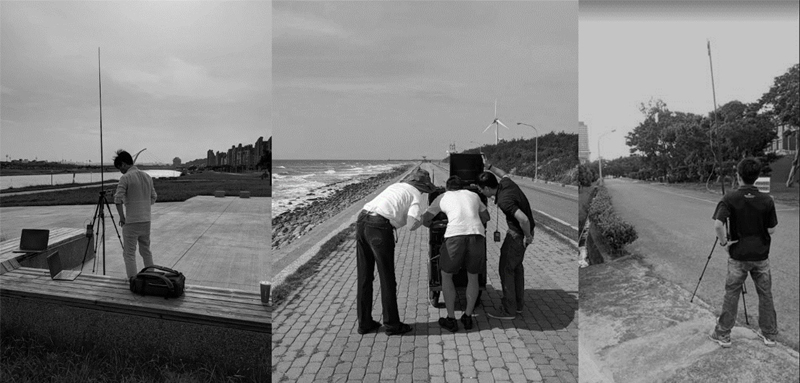
802.11ah(Wi-Fi HaLow) Overview
- WI-FI STANDARDS
- IEEE 802.11AH (WI-FI HALOW)
- COMPARISON OF IOT TECHNOLOGIES
- FREQUENCY BAND OF GEOGRAPHICAL AREA
- FIELD TEST EXAMPLES
WIFI HALOW STANDARDS
STANDARD & SPECIFICATION

CERTIFICATION & PROMOTION

Characteristics of IEEE 802.11ah HaLow
| Frequency Band | License-exempt bands below 1 GHz, excluding the TV white spaces – Example: 863-868.6 MHz (Europe), 915.9 -928.1 MHz (Japan), 755-787 MHz (China), 917- 923.5 MHz (Korea), 866-869 MHz, 920-925 MHz (Singapore), and 902-928 MHz (U.S.) |
|---|---|
| Channel Width | 1/2/4/8/16 MHz |
| Range | Up to 1Km (outdoor) |
| End Node Transmit Power | Dependent on regional regulations (from 1 mW to 1 W) |
| Data Rate | 150 Kbps ~ 346.666 Mbps |
| Devices per Access Point | 8,191 |
| Standard Body | IEEE 802.11 working group |
| Topology | Star, Tree |
Ultra-Low Power, Long Range Wi-Fi for IoT
| Features or Capabilities | NRC7292 case | Wi-Fi HaLow Key benefits |
|---|---|---|
| Sub-GHz radio frequencies | 750~950MHz |
|
| Narrow band, OFDM channels | 1,2,4MHz BW, Max 64QAM | |
| Ultra-low power sleep modes | TIM/TWT | |
| Flexible and high data rate | Up-to 15Mbps PHY | |
| Large volume of STA per AP | 1080 STA per AP | |
| Enhanced Security | WPA3 & enhancedopen security | |
| Ready for easy internet & cloud connectivity | TCP/IP, IPv6 | |
| World-wide open standard | IEEE standard WFA Certification |
COMPARISON OF IOT TECHNOLOGIES
| BLE | ZigBee | Z-Wave | Wi-SUN | LoRa | NB-IoT | HaLow (NRC7292) | |
|---|---|---|---|---|---|---|---|

|

|

|

|
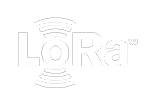
|

|

|
|
| Power Consumption | Very Low | Very Low | Very Low | Very Low | Very Low | Very Low | Very Low |
| Frequency | 2.4GHz | 2.4GHz/Sub-1GHz | Sub-1GHz | Sub-1GHz | Sub-1GHz | Licensed | Sub-1GHz |
| Data rate | 1Mb/s 270kb/s | 250kb/s | 40kb/s, 100kb/s | 300kbps | 11kbps, 50kbps | 250kbps | 15Mbps |
| Coverage | < 100m | < 20m | < 30m | < 1km | < 10 km | < 10km | < 1.5km |
| Self Network Configuration | O | O | O | O | X (Operator) |
X (Operator) |
O |
| TCP/IP(Internet) | X | X | X | X | X | O | O |
| Modulation | GFSK | BPSK, OQPSK | BPSK, GFSK | FSK, OFDM, OQPSK | CSS | QPSK | OFDM |
| Security | AES128 | AES128 | Security2(s2) | IEE802.1x | AES128 | 3GPP Security | WPA3 |
| Firmware OTA | O | O | O | O | - | O | O |
| Main Topology | Scatternet | Mesh | Mesh | Mesh | Star | Star | Star/Tree/Mesh |
| World Wide De facto Standard | Bluetooth SIG | IEEE 802.15.4 | X | IEEE 802.15.4g | X |
3GPP LTE Cat-NB1 |
IEEE 802.11ah |
Data Rate vs Range of Unlicensed IoT Connective Technologies
- Wi-Fi HaLow provides significant range improvement over 11b/n, BTLE including BT Long Range Modes and Zigbee as well as the data-rate much higher than other LPWAN technologies
- Allows direct connect of sensors to APs without professional mesh install
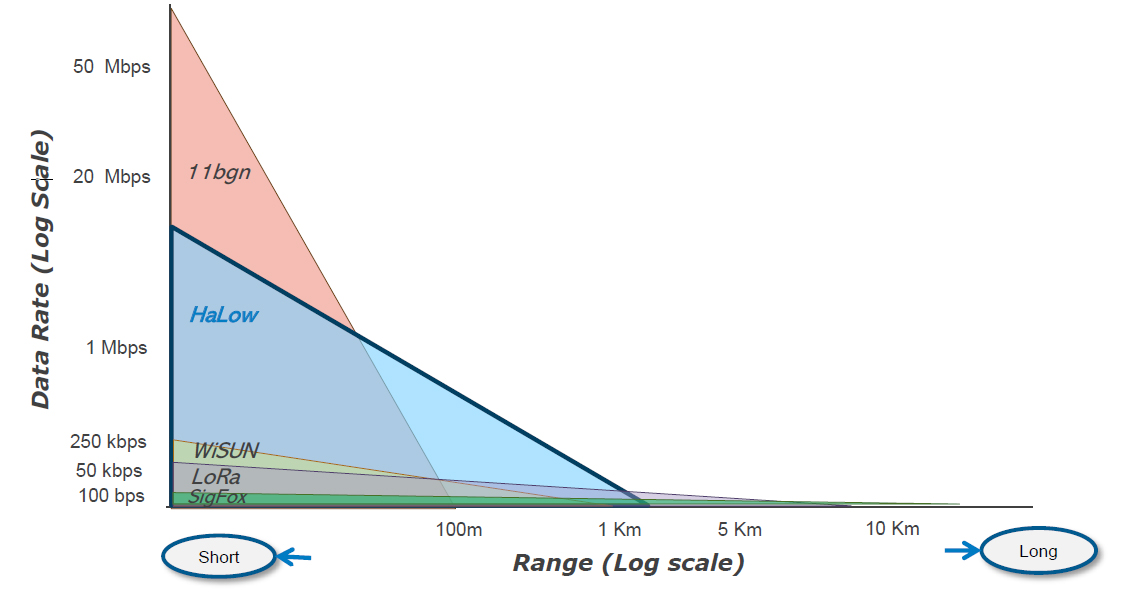
FREQUENCY ALLOCATION IN SOUTH KOREA
Allocated frequency and Tx power
| Item | Value | |
|---|---|---|
| Allocated frequency (MHz) | 921 - 923 (USN1) | 925 – 931 (USN5) |
| Allowed Bandwidth (MHz) | 1 | 1, 2 |
| # of Channel @ BW 1MHz | 2 | 4 |
| # of Channel @ BW 2MHz | 0 | 2 |
| Max Tx power e.r.p (mW) | 10, 25 | 50, 100 |

- 전파법 기술기준안 개정 완료 (2021.10)
- 뉴라텍 지원사항: NRM7292B module 전파 인증 (USN1, USN5) 및 무선마이크 신호 회피 알고리즘 FW 제공
- Radio Wave Act technical standards revision completed (October 2021)
- Newatec support: NRM7292B module radio wave certification (USN1, USN5) and wireless microphone signal avoidance algorithm FW provided
NRC7292 802.11AH SOC – SYSTEM FEATURE
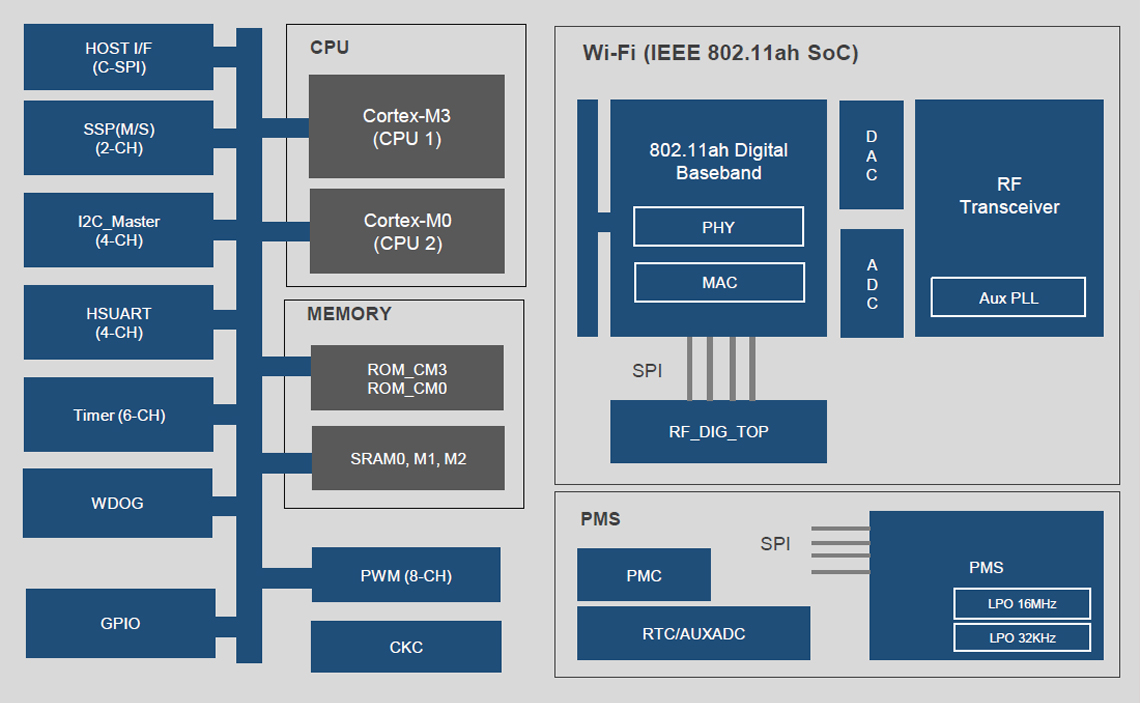
- Silicon Process
- 40nm CMOS LP
- Voltage: 2.6~3.6V
- Clock Resources
- 32.768kHz OSC& 32MHz OSC
- LPO 16MHz/32.768kHz
- System PLL (Aux PLL)
- 96MHz mode only
- Application Processor
- Cortex-M3(48/32MHz)
- Wi-Fi Communication Processor
- Cortex-M0(48/32MHz) for LMAC, PHY/RF control
- Internal Memory
- ROM0 dedicated to CM3 : 32KB & ROM1 dedicated to CM0 : 32KB
- SRAM0/1/2 (256KB/256KB/ 224KB) for CM0 & CM3
- Instruction Cache Memory : 32KB
- Subsystem IPs
- AHB – 11ah MAC/PHY, GDMA, HOST I/F(C–SPI), Mailbox
- APB – RTC/Clock Control(CKC), PMC(Power Management Controller), WDOG, 4x I2C Master, 2x SSP, 4x HSUART, 8x PWM- 6x TIMER, GPIO, 4x 9-bit ADC
NRM7292B MODULE
Allocated frequency and Tx power
| Standard | IEEE 802.11ah-2016 | Security | AES-CCMP |
|---|---|---|---|
| Data rate | 150Kbps ~ 15Mbps | Voltage | 2.8~3.6V(Typical 3.3V) |
| Frequency |
|
Current | Tx 180mA @50mW Rx 40mA (VBAT=VDD_FEM=3.3V) |
| Channel Bandwidth | 1MHz / 2MHz | Operating Temperature | -40 ~ 85℃ |
| Interface |
|
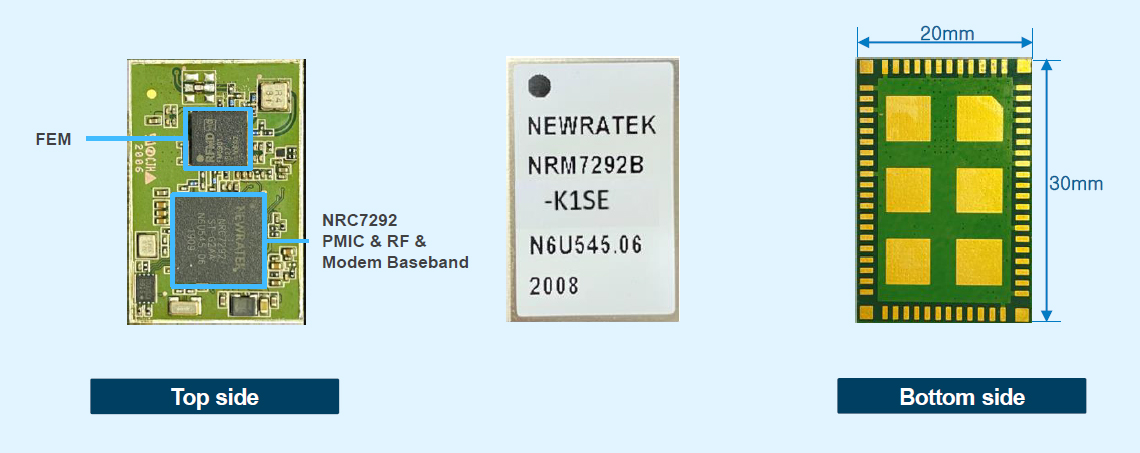
SYSTEM TARGET
Low Cost
- ARM Cortex-M3 for
- Client Application
- No External Memory
- RTC and PMU on Chip
Flexible
- Standalone vs. External Host Type
- Pre-Power Amp vs. External Power Amp
- Host boot vs. XIP boot mode (External Flash Memory)
- Both Modes for AP & STA
Low Power
- Inside PMU (Power Management Unit)
- Power Gating Design
- Clock Gating Design

EVALUATION KIT
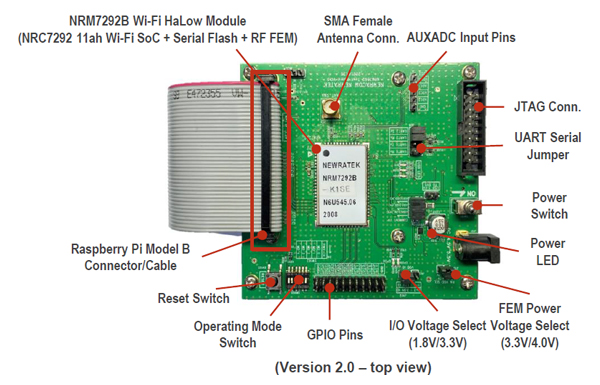
NRM7292B 11ah Wi-Fi module board
- Host driver and CLI for host mode
- SDK for standalone mode
- Both AP and station support
- SMA female Antenna connector
- SPI/UART for external host interface
- i2C/UART/SSP/GPIO for external device interface
- Miro-USB type B connector for serial interface
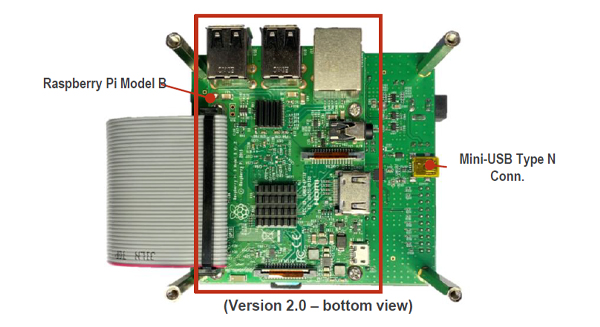
Raspberry Pi 3 model B External Host board
- Linux ver. 4.1x with Wi-Fi features
- Iper3 EVK performance test tool
- 802.11n connectivity support
802.11AH APPLICATIONS

- IEEE 802.11AH APPLICATIONS
- SMART HOME
- SMART BUILDING
- SMART FACTORY
- SMART HEALTHCARE
- SMART EV STATION
IEEE 802.11AH APPLICATIONSS
IEEE 802.11ah uses a sub-1GHz bandwidth, which allows a greater coverage of distance up to 1km while transmitting data at reasonable rates. Therefore, it is suitable for almost all IoT applications such as smart home, smart city, smart energy, smart building, smart factory and smart farm.
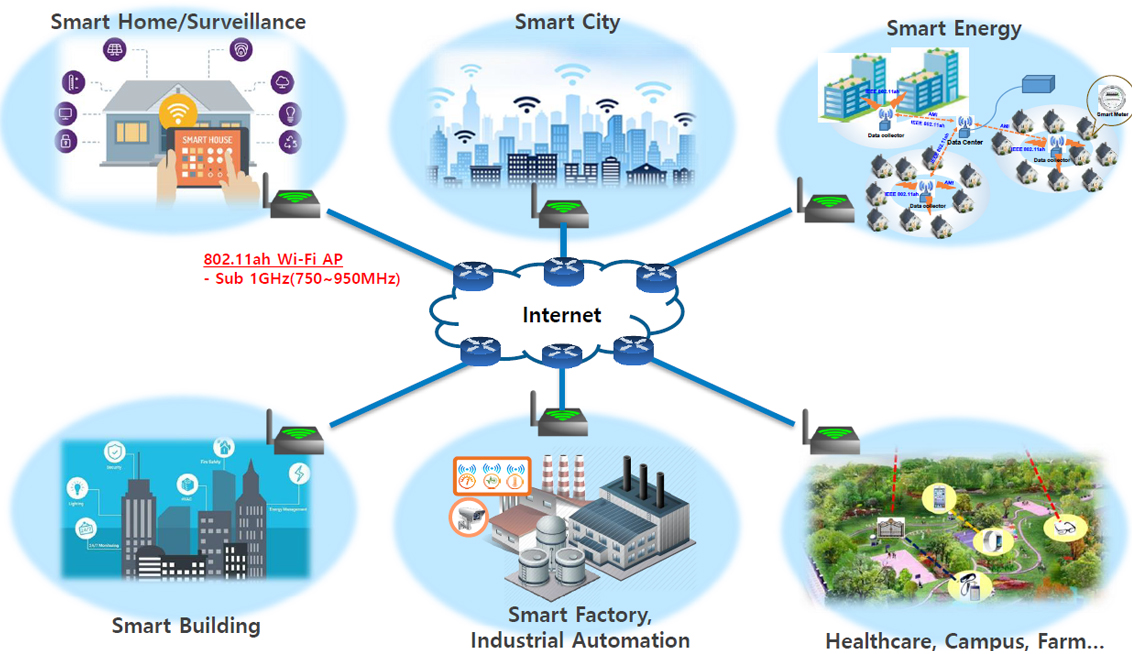
SMART FACTORY
Advantages
- Coverage : 300~500m with max 1080 STA per AP
- Mbps throughput enables sensor signal data collection for big data analysis or pattern recognition
- Low latency suitable for emergency warning or failure detection
Use cases
- Equipment and process monitoring and diagnosis
- Realtime sensor data collection (vibration, temp/humidity, strain gauge or gas leakage)
- Safety or security (CCTV/Thermal camera)
- Factory Energy Management System (FEMS)
- Wearable (Helmet camera, Watch, Walky-talky and etc.)
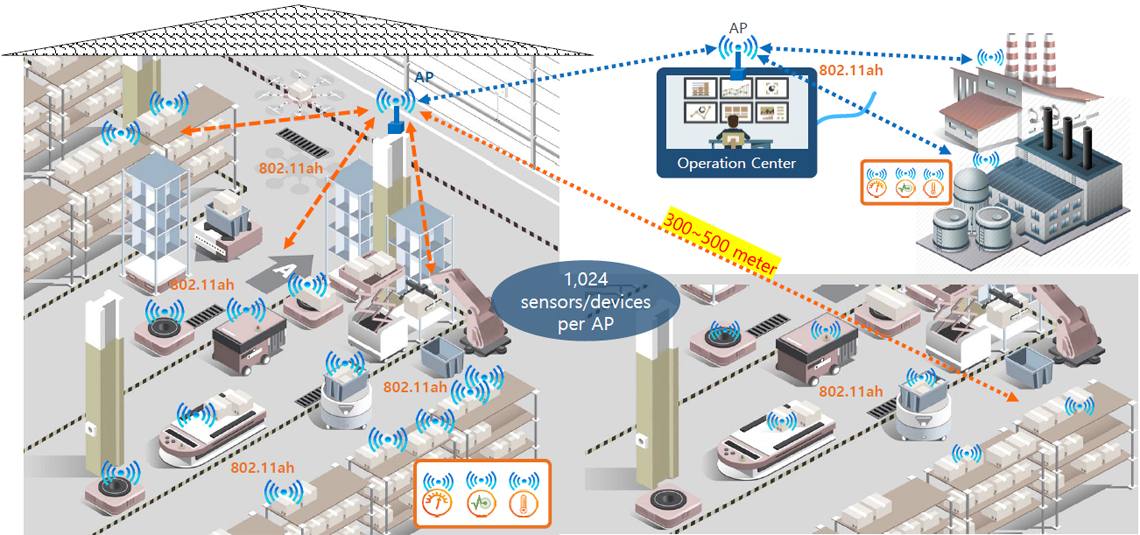
SMART Building
Advantages
- One AP can cover about 300m distance and multiple floors
- Simple configuration (star or tree topology) for up to 1080 station per AP
- Mbps throughput enable large amount of data gathering for big data analysis
- Saving Installation cost for wired network and regular fee
Use cases
- Tri band Wi Fi AP or IoT hub/gateway
- Building energy management system (Meters & gauges)
- HVAC & air conditioner
- Various sensor devices
- Lighting system
- Security & surveillance system
- Facility & equipment maintenance
- Communication between indoor and outdoor unit
- Backhaul network for other short range devices(Wi Fi, BT, zigbee , z wave etc.)
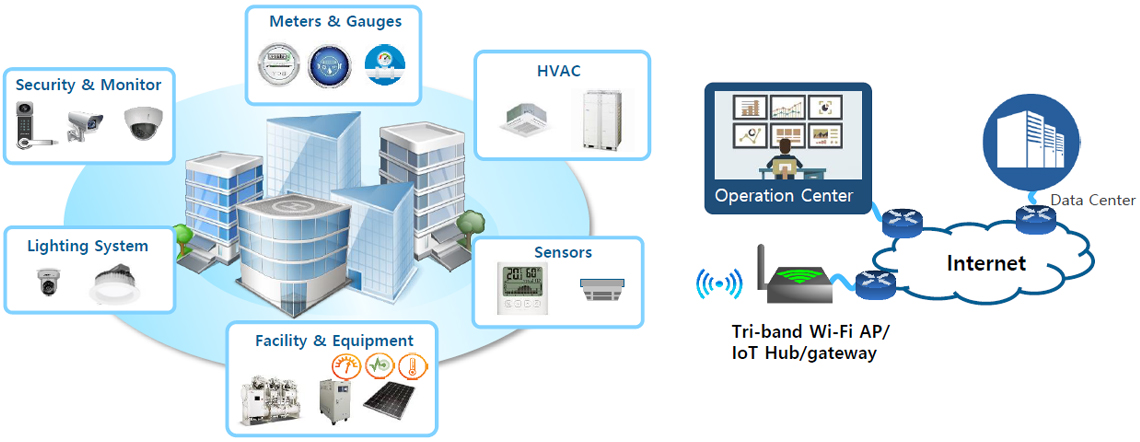
SMART HEALTHCARE
Smart healthcare for indoor/outdoor wireless network
- Coverage: 300~500 meters for indoor & 1,000 meters for outdoor
- IP based simple configuration by 802.11ah with global standard
- Remote monitoring for elderly care/independent living & personal fitness of outdoor
- Required high data rate for periodic/event based data transferring of indoor pedestrians & mobile devices
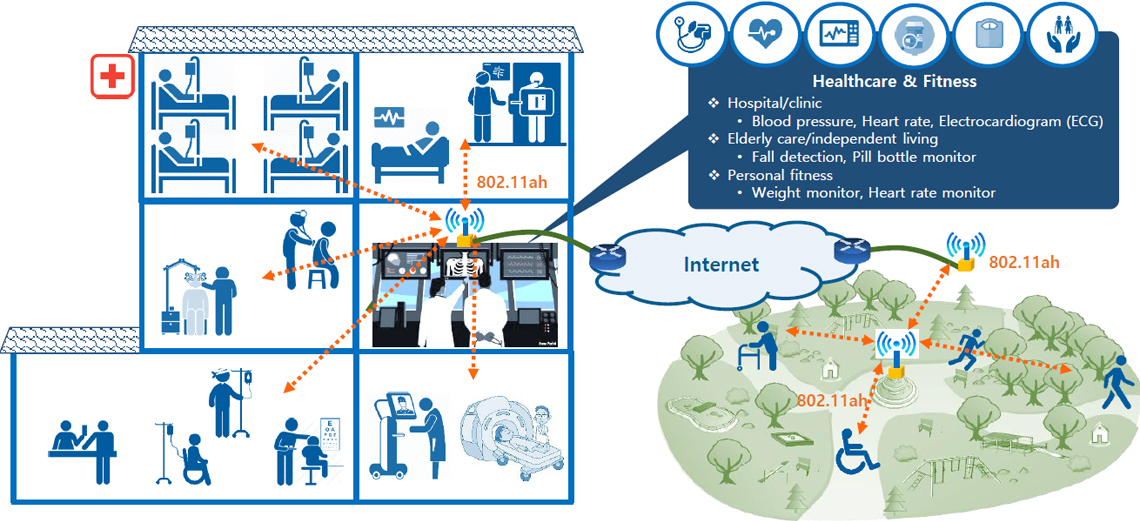
SMART EV CHARGING STA. / PARKING LOT
Charging Point Service for Electric Vehicle by long range & high data rate of 802.11ah
- Coverage: 1,000 meters for EV information/charging status & 100~300 meters for monitoring camera
- IP based simple configuration by 802.11ah with global standard
- EV Charging Point service from City Operating Center
- Power level & available information
- Monitoring and recognizing each Vehicle
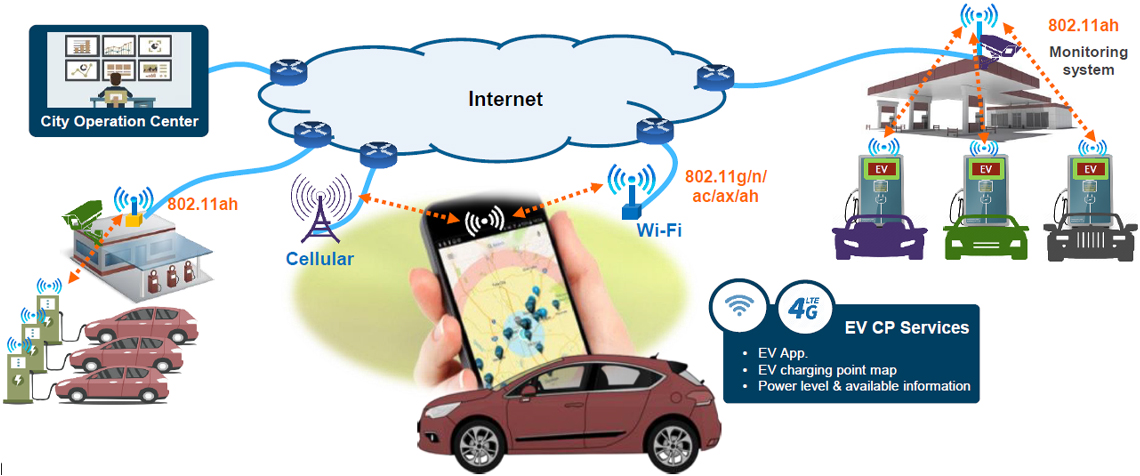
SMART HOME
Advantages
- Whole home coverage including outdoor area
- Mbps quality throughput between AP and IoT devices
- Better wall penetration performance
- Reaches front door, multi-floor, basement, garage and garden
- Complex mesh network for coverage extension is not required
- Supports TCP/IP for easy internet connection
Use cases
- Sub-GHz HaLow enabled Tri-band Wi-Fi access point
- AI speaker with IoT hub
- Smart IoT gateway / EMS gateway / dongle
- Door lock / door camera
- Webcam / surveillance camera (indoor / outdoor)
- Smart CE / smart lighting
- Smart meters and gauges (Electric, Solar, Water, Gas)
- Sensors (security, gas, fire, air quality, temperature)
- Remote control and monitoring devices
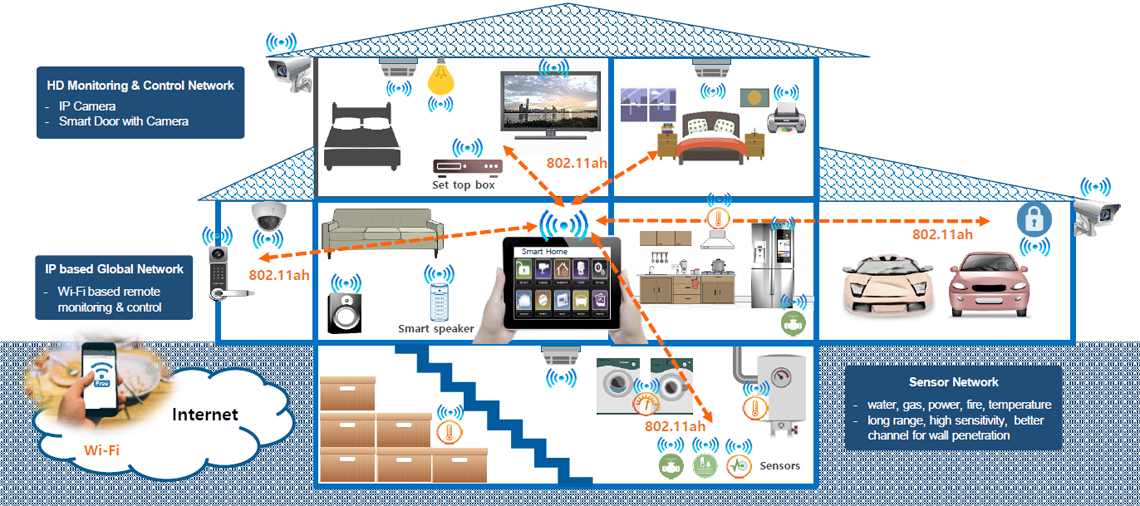
NRC7292 IEEE 802.11ah Wi-Fi Solution + MCU SoC
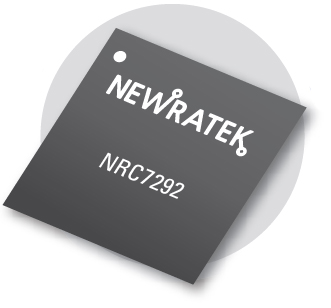
Overview
As an optimized Wi-Fi solution for internet of things (IoT) devices, NRC7292 is industry’s first system on a chip (SoC) that is compliant with the IEEE 802.11ah standard. Operating in the Sub 1GHz license-exempt band, it offers a much greater range over 2.4GHz and 5GHz technologies. 1/2/4MHz channel widths with optional short guard interval (SGI) yield 150 Kbps to 15 Mbps PHY throughput which can support lowrate sensor to high-rate surveillance camera application. The protocol’s power-saving mechanisms like a longer sleep time greatly reduces power consumption and hence increase battery life.
The self-contained IEEE 802.11ah Wi-Fi networking capabilities with fully integrated radio transceiver of NRC7292 offers the ideal solution to add Wi-Fi connectivity to IoT products. It minimizes the PCB size, requires minimal external circuitries, and enables fast time-to-market.
The RF transceiver is a complete radio front-end optimized for Sub 1GHz band and it has fully integrated pre-power amplifiers as well as the capability to support various commercial external FEM device. With the dual embedded ARM Cortex-M0 and Cortex-M3 processor, NRC7292 can be used either as a standalone device or a slave to a host processor via serial peripheral interface (SPI) or universal asynchronous receiver transmitter (UART) interface. In addition, it can support both AP and STA roles.
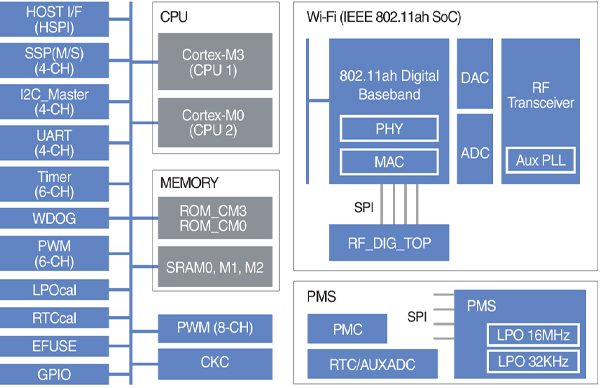
Target Applications
- IoT applications
- Wearables
- Home automation
- Healthcare
- Industrial automation
- Safety and security
- Smart grid
- Multimedia streaming
Specification
- CPU
- ARM Cortex-M3 for Application
- ARM Cortex-M0 for WLAN
- Mailbox for communication
- Memory
- 32KB Boot ROM for M0
- 32KB Boot ROM for M3
- 752KB System SRAM
- XIP with cache (2 ways, 32KB)
- Communication Peripherals
- GPIO X 54
- SPI X 4
- UART X 4
- I2C X 4
- 9-bit ADC X 4
- RF Transceiverr
- Single-ended RF ports
- Frequency band: 750 to 950MHz
- Linear TX output power: 0dBm
- TX gain range: 30dB
- RX noise figure: <4dB
- Max. input level: -10dBm
- 10bits ADC and DAC
Key Features
- Complies with IEEE 802.11ahTM-2016
- Fully Integrated on-chip 11ah modem, RF transceiver, processor, and memory
- Support 1/2/4 MHz bandwidth
- Up to 15 Mbps data rate
- Travelling pilot for Doppler spread
-
Low power mode operation
- Legacy
- WMM-PS
- TWT
- AES-CCMP security
- Dedicated SPI and UART interface for host
- Various peripheral interfaces for sensor device
- Manufacturing tools for configuration and test
- Diagnostic and DUT test tools for indoor and outdoor test

